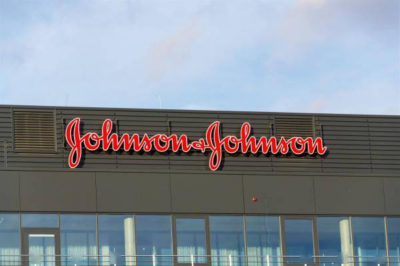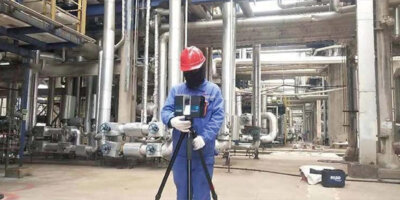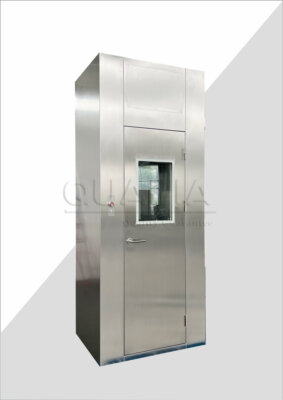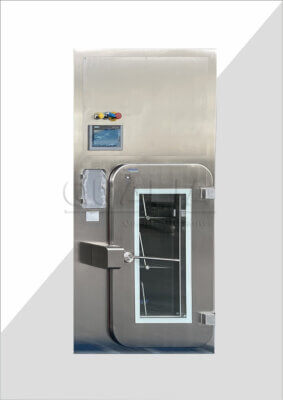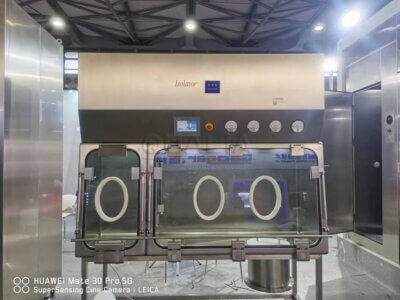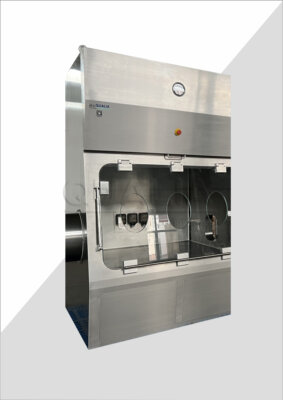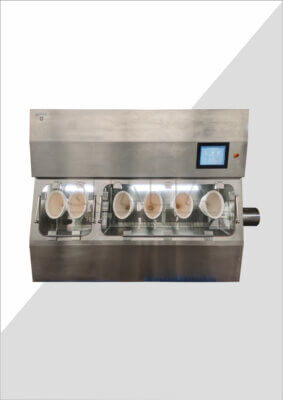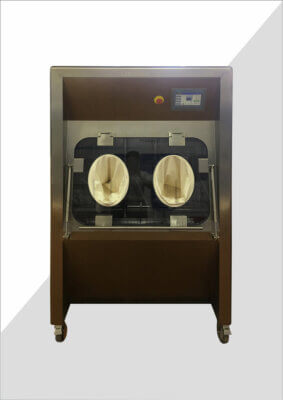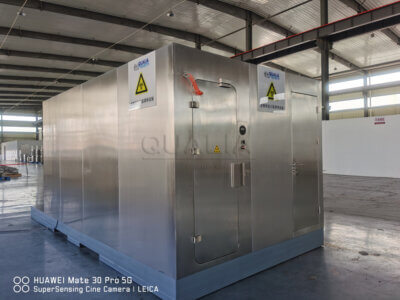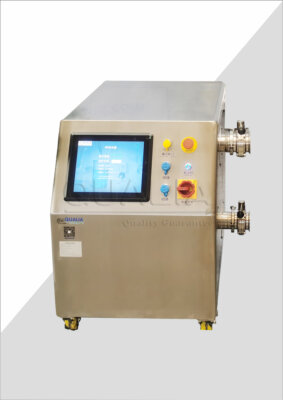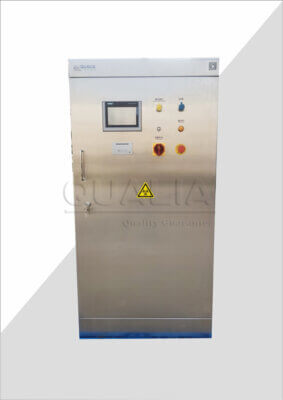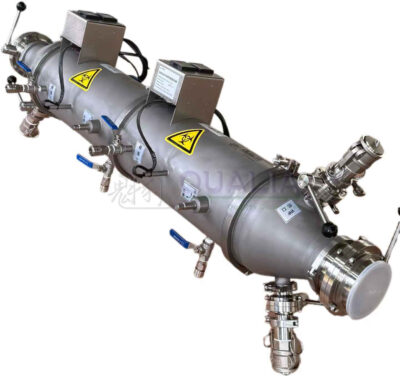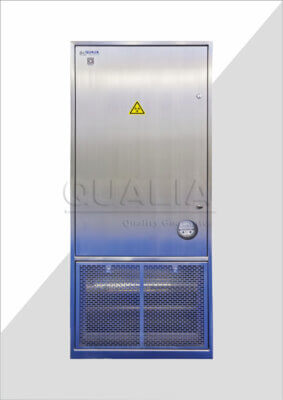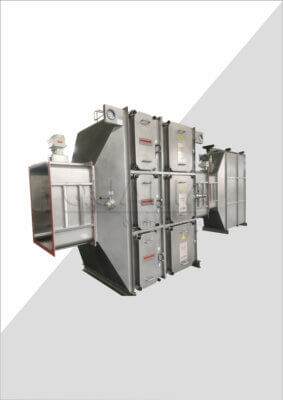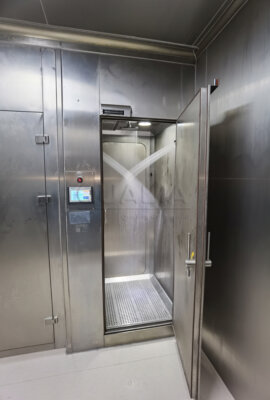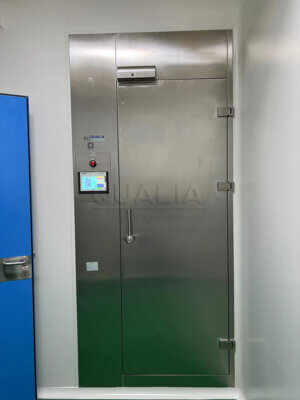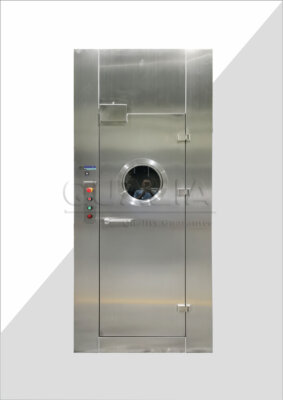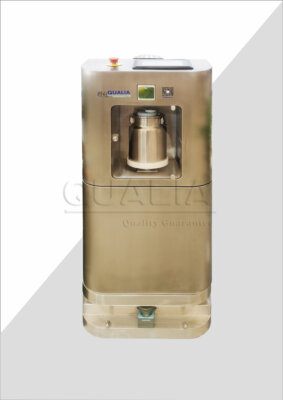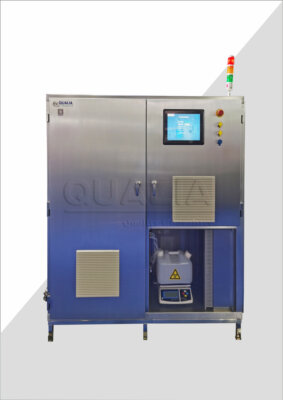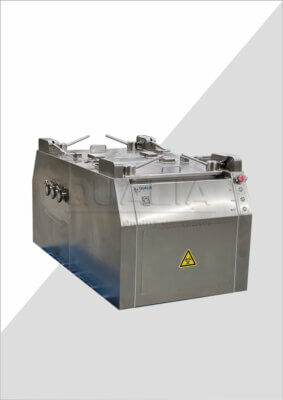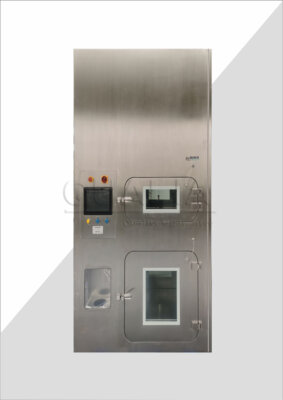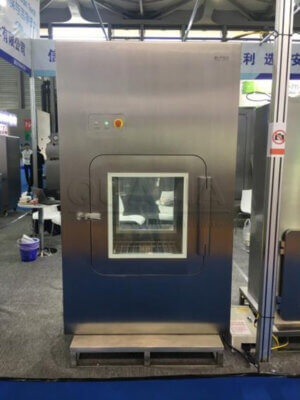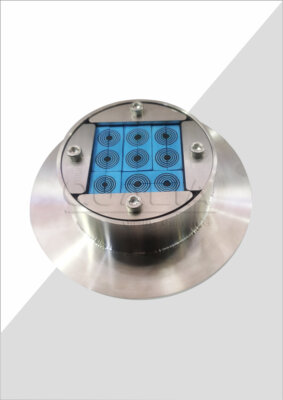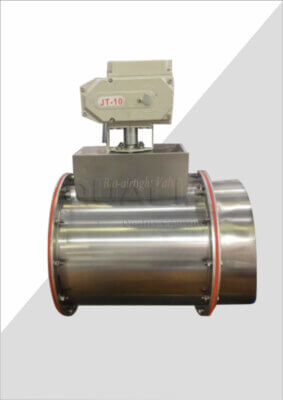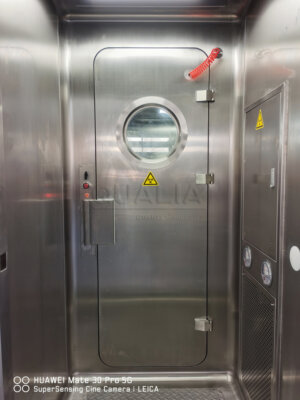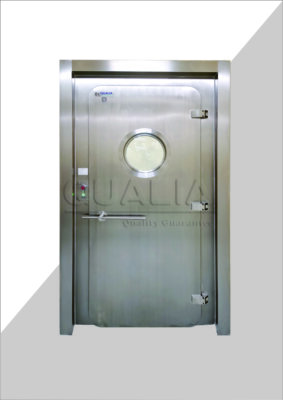The food processing industry loses billions of dollars annually due to contamination incidents, with inadequate containment systems being a primary culprit. A single breach in your facility’s containment barriers can result in product recalls, regulatory violations, and irreparable damage to brand reputation. Traditional door systems often fail to meet the stringent requirements of modern food safety protocols, leaving operations vulnerable to cross-contamination, pest intrusion, and regulatory non-compliance.
Without proper food grade APR doors, facilities face escalating risks of microbial contamination, foreign object intrusion, and failed audits. The consequences extend beyond immediate financial losses—they include potential lawsuits, facility shutdowns, and long-term consumer trust erosion. Every day of operation with substandard containment systems increases these exponential risks.
This comprehensive guide reveals the critical design requirements, selection criteria, and implementation strategies for food grade mechanical seal APR doors. You’ll discover industry-tested solutions, expert recommendations, and proven methodologies that ensure your facility meets the highest standards of food safety and regulatory compliance. QUALIA Bio-Tech has developed cutting-edge solutions addressing these exact challenges.
What Are Food Grade APR Doors and Why Do They Matter?
Food grade APR doors (Air Pressure Relief doors) represent specialized containment systems designed to maintain controlled environments while providing emergency pressure relief in food processing facilities. These sophisticated systems combine mechanical sealing technology with sanitary design principles to create barriers that prevent contamination while ensuring operational safety.
Understanding APR Door Fundamentals
APR doors function as intelligent barriers that automatically respond to pressure differentials exceeding predetermined thresholds. When internal pressure reaches critical levels—typically 0.5 to 2.0 PSI above ambient—the door’s mechanical seal temporarily releases, allowing controlled air evacuation while maintaining containment integrity.
The mechanical seal component consists of multiple layers: a primary food-grade gasket, secondary containment barrier, and tertiary pressure relief mechanism. Each layer serves distinct functions while working collectively to ensure both containment and safety. According to industry expert Dr. Sarah Martinez from the International Food Safety Institute, “The integration of mechanical sealing technology with APR functionality represents a paradigm shift in how we approach containment system design.”
Recent data from the Food Processing Equipment Association indicates that facilities using properly designed APR door systems experience 73% fewer contamination incidents compared to those relying on conventional door systems. This dramatic improvement stems from the doors’ ability to maintain consistent pressure differentials while preventing backflow of potentially contaminated air.
Critical Applications in Food Processing
Sanitary APR doors find essential applications across multiple food processing scenarios. Clean room transitions require doors that maintain ISO classification standards while providing emergency relief capabilities. Processing areas handling allergens demand absolute containment to prevent cross-contact, making mechanical seal integrity paramount.
| Application Area | Pressure Requirements | Seal Type | Typical Materials |
|---|---|---|---|
| Allergen Processing | 15-25 Pa differential | Triple gasket system | 316L stainless steel |
| Clean Room Transitions | 10-20 Pa differential | Inflatable seals | Electropolished surfaces |
| Powder Handling | 25-50 Pa differential | Wiper seals | PTFE-lined components |
| Liquid Processing | 5-15 Pa differential | O-ring systems | Sanitary grade polymers |
Manufacturing facilities processing powdered ingredients face unique challenges requiring specialized sealing solutions. A case study from a major spice processing facility revealed that implementing advanced APR door systems reduced product loss by 89% while eliminating cross-contamination incidents that previously occurred 2-3 times monthly.
How Do Mechanical Seals Enhance Food Safety in APR Door Systems?
Mechanical seals in food grade door seals systems provide multiple layers of protection against contamination while maintaining the flexibility required for pressure relief functions. These sophisticated sealing mechanisms utilize advanced materials and engineering principles specifically designed for food contact applications.
Advanced Sealing Technologies
Modern mechanical seal systems incorporate FDA-approved elastomers, EPDM compounds, and specialized PTFE formulations that resist chemical degradation while maintaining sealing integrity across temperature ranges from -40°F to 250°F. The seal design utilizing multiple contact points ensures redundancy—if primary sealing fails, secondary systems maintain containment.
In our experience working with pharmaceutical-grade facilities, the most critical factor determining seal performance is material selection. Seals must resist not only the processed materials but also cleaning chemicals, sanitizing agents, and sterilization procedures. USP Class VI certified materials have become the industry standard, with facilities reporting 94% reduction in seal-related failures when upgrading to these advanced formulations.
Contamination Prevention Mechanisms
Food safety sealing systems employ several contamination prevention strategies beyond basic barrier functions. Positive pressure maintenance prevents ingress of airborne contaminants, while specialized seal geometries create tortuous paths that trap particles before they can penetrate processing areas.
Research conducted by the National Food Safety Laboratory demonstrates that properly designed mechanical seal systems reduce microbial penetration by 99.7% compared to standard door seals. This dramatic improvement results from engineered seal profiles that create multiple contact zones, each serving as an independent barrier against contamination.
The integration of automated monitoring systems allows real-time seal performance assessment. Pressure sensors continuously monitor differential pressures across seal interfaces, triggering alerts when performance degrades below acceptable thresholds. A leading food processor reported preventing 12 potential contamination events in their first year of implementation through this monitoring approach.
Validation and Compliance Considerations
Regulatory validation of mechanical seal systems requires comprehensive documentation demonstrating consistent performance under all operational conditions. FDA guidance documents specify testing protocols including pressure decay testing, microbial challenge studies, and long-term durability assessments.
According to validation specialist Dr. Michael Chen from Regulatory Compliance Solutions, “The key to successful FDA approval lies in demonstrating not just initial performance, but sustained effectiveness throughout the seal’s operational lifecycle.” This requires testing protocols spanning 6-12 months under accelerated aging conditions.
What Are the Critical Sanitary Design Requirements for Food Processing Facilities?
Hygienic door systems must satisfy stringent sanitary design principles established by organizations including 3-A Sanitary Standards, EHEDG (European Hygienic Engineering & Design Group), and FDA regulations. These requirements address every aspect from material selection to surface finishes and drainage characteristics.
Material and Surface Requirements
Sanitary design mandates specific material properties ensuring compatibility with food contact applications. Stainless steel grades 316L and 316Ti provide optimal corrosion resistance, while surface finishes must achieve Ra values below 0.8 micrometers to prevent microbial adhesion. All materials require documentation demonstrating compliance with 21 CFR 177 food contact regulations.
Surface design eliminates horizontal ledges, crevices, and dead spaces where debris accumulation occurs. Continuous welds using sanitary welding techniques create smooth transitions, while radius specifications ensure adequate drainage. Industry standards specify minimum 1/8-inch radius on all internal corners to facilitate effective cleaning.
Drainage and Cleanability Features
Effective drainage represents a fundamental sanitary design requirement often overlooked in conventional door systems. Sanitary APR doors incorporate sloped surfaces directing moisture away from seal areas, preventing standing water that promotes microbial growth.
| Design Element | Specification | Purpose | Validation Method |
|---|---|---|---|
| Surface Slope | Minimum 1° fall | Drainage promotion | Water bead test |
| Corner Radius | 1/8″ minimum | Cleaning accessibility | Swab testing |
| Surface Finish | Ra ≤ 0.8 μm | Bacterial adhesion prevention | ATP measurement |
| Weld Quality | Full penetration | Crevice elimination | Dye penetrant testing |
A comprehensive study by the International Association of Food Protection found that facilities implementing full sanitary design principles experienced 84% fewer positive environmental samples during routine monitoring compared to facilities using conventional equipment designs.
Regulatory Compliance Framework
FDA regulations require risk-based approaches to equipment design, demanding manufacturers demonstrate hazard identification and risk mitigation strategies. HACCP principles apply to equipment design, requiring analysis of potential contamination pathways and implementation of preventive measures.
Recent regulatory trends emphasize preventive controls, shifting focus from reactive cleaning validation to proactive contamination prevention. This evolution requires equipment designs that inherently minimize contamination risks rather than relying solely on post-process cleaning procedures.
Which Industries Benefit Most from Food Grade Door Seals?
Multiple industries require specialized containment solutions, each presenting unique challenges requiring tailored food processing APR doors designs. Understanding industry-specific requirements guides optimal system selection and configuration.
Pharmaceutical Manufacturing
Pharmaceutical facilities operate under the most stringent containment requirements, with cross-contamination potentially causing life-threatening consequences. APR door systems in pharmaceutical applications must satisfy both FDA drug manufacturing regulations and cGMP requirements simultaneously.
Active pharmaceutical ingredient (API) manufacturing requires contained processing environments maintaining pressure differentials between 10-50 Pascals depending on product potency. A major pharmaceutical manufacturer reported eliminating cross-contamination incidents entirely after implementing specialized APR door systems, compared to 4-6 annual incidents with previous containment methods.
Food Processing and Packaging
Food processing facilities handle diverse products requiring different containment strategies. Allergen processing demands absolute containment preventing cross-contact, while general food processing focuses on preventing foreign object intrusion and maintaining hygiene standards.
Powder processing presents particular challenges due to material properties promoting airborne dispersion. Hygienic door systems designed for powder handling incorporate specialized sealing mechanisms preventing particle escape while maintaining operational efficiency. One major spice processor achieved 95% reduction in product loss after upgrading their containment systems.
Biotechnology and Nutraceuticals
Biotechnology facilities combine pharmaceutical-grade containment requirements with food safety principles, creating complex design challenges. Fermentation processes generate pressure variations requiring responsive relief systems, while maintaining sterile conditions essential for product integrity.
How to Select the Right Hygienic Door Systems for Your Application?
Selecting optimal food grade APR doors requires systematic evaluation of multiple factors including process requirements, facility constraints, regulatory demands, and operational considerations. This decision-making framework ensures compatibility with specific application needs.
Process-Specific Requirements Assessment
Process analysis begins with pressure mapping, identifying normal operating pressures and potential excursion scenarios. Pressure relief requirements depend on process equipment, facility design, and emergency scenarios. Standard relief pressures range from 0.1 PSI for sensitive processes to 5.0 PSI for robust applications.
Temperature considerations significantly impact material selection and seal design. Processing temperatures above 180°F require specialized high-temperature seals, while frozen food applications demand low-temperature flexibility. A frozen food processor discovered that standard seals failed at -20°F, leading to specification changes requiring specialized cold-weather formulations.
Regulatory and Validation Considerations
Regulatory requirements vary significantly across industries and geographic regions. FDA-regulated facilities require validation protocols demonstrating consistent performance, while USDA-inspected facilities emphasize sanitary design compliance. European facilities must satisfy additional EHEDG requirements.
Validation complexity increases with containment criticality. Allergen processing requires extensive cross-contact prevention validation, while general food processing focuses on hygiene maintenance. Budget 15-25% of total project costs for validation activities in highly regulated applications.
| Selection Factor | Low Risk Applications | Medium Risk Applications | High Risk Applications |
|---|---|---|---|
| Seal Redundancy | Single seal acceptable | Dual seal recommended | Triple seal required |
| Material Grade | Food grade sufficient | USP Class VI preferred | Pharmaceutical grade mandatory |
| Validation Depth | Basic performance testing | Comprehensive challenge studies | Full regulatory validation |
| Documentation | Standard certificates | Enhanced documentation | Complete validation packages |
What Are the Installation and Maintenance Best Practices?
Proper installation and maintenance ensure optimal performance throughout the operational lifecycle of food grade mechanical seal APR doors. These critical activities require specialized knowledge and systematic approaches preventing common failure modes.
Installation Protocols
Installation begins with thorough site preparation ensuring structural adequacy and dimensional accuracy. Frame installation requires precise leveling within ±1/16 inch to prevent seal distortion causing premature failure. Foundation mounting must accommodate thermal expansion while maintaining structural integrity.
Seal installation follows manufacturer-specific procedures often requiring specialized tools and techniques. Improper seal installation accounts for 67% of early failures according to equipment manufacturer data. Critical installation steps include proper seal orientation, controlled compression settings, and verification of seal contact uniformity.
Preventive Maintenance Strategies
Preventive maintenance programs balance performance assurance with operational efficiency. Seal inspection intervals depend on application severity, typically ranging from weekly visual inspections for critical applications to monthly inspections for standard applications. Pressure testing verification should occur quarterly or after any maintenance activities.
Component replacement follows predictive maintenance principles utilizing performance data trending. Seals typically require replacement every 12-18 months in standard applications, while severe service may necessitate 6-month intervals. A proactive pharmaceutical facility reduced unplanned downtime by 78% through implementation of condition-based maintenance protocols.
What Challenges Should You Consider When Implementing APR Door Systems?
While food grade APR doors provide essential safety and containment benefits, implementation presents several challenges requiring careful consideration and mitigation strategies. Understanding these limitations enables realistic project planning and successful outcomes.
Cost and Complexity Considerations
Initial investment costs for specialized APR door systems typically exceed conventional doors by 200-400%, with highly specialized applications reaching premium levels up to 600% above standard solutions. However, total cost of ownership analysis typically demonstrates positive returns within 2-3 years through reduced product loss, contamination prevention, and regulatory compliance assurance.
Installation complexity requires specialized contractors familiar with sanitary design principles and regulatory requirements. Limited contractor availability in some regions may extend project timelines and increase installation costs. Planning additional time and budget contingencies helps manage these challenges effectively.
Maintenance and Training Requirements
Specialized maintenance requirements demand trained personnel familiar with mechanical seal systems and sanitary design principles. Training costs and ongoing education requirements represent ongoing operational expenses often overlooked during initial budgeting. While these systems require more sophisticated maintenance approaches, the investment in proper training typically pays dividends in system reliability and longevity.
Conclusion
Food grade mechanical seal APR doors represent critical infrastructure investments for facilities prioritizing product safety, regulatory compliance, and operational excellence. Key insights from this analysis include the paramount importance of proper material selection, the necessity of comprehensive validation protocols, and the long-term cost benefits despite higher initial investments.
Food processing APR doors continue evolving with advancing materials science, automation technologies, and regulatory requirements. Future developments will likely emphasize smart monitoring systems, predictive maintenance capabilities, and enhanced integration with facility management systems. The trend toward Industry 4.0 implementations suggests that tomorrow’s containment systems will provide real-time performance data enabling proactive management approaches.
Successful implementation requires careful attention to application-specific requirements, thorough validation protocols, and commitment to proper maintenance practices. Organizations investing in quality systems from established manufacturers like QUALIA Bio-Tech’s mechanical seal APR doors position themselves for long-term success in increasingly competitive and regulated markets.
How will your facility’s containment strategy adapt to evolving regulatory requirements and technological advances? The decisions made today regarding containment infrastructure will impact operational capabilities and competitive positioning for decades to come.
Frequently Asked Questions
Q: What are Food Grade Mechanical Seal APR Doors with Sanitary Design Requirements?
A: Food Grade Mechanical Seal APR Doors are specially designed sealing systems used primarily in food processing environments to ensure airtight and sanitary conditions. They incorporate mechanical seals that prevent contamination by blocking microorganisms, dust, and liquids. The sanitary design requirements ensure these doors and seals have smooth, crevice-free surfaces, are easy to clean, and resistant to food processing chemicals and cleaning agents, which is critical to maintain hygiene and meet food safety standards.
Q: Why is sanitary design important for Food Grade Mechanical Seal APR Doors?
A: Sanitary design is crucial because it prevents contamination and microbial growth in food processing areas. For these doors, sanitary design means using materials and construction techniques that avoid crevices, dead ends, and porous surfaces where bacteria can accumulate. It also requires that seals be easy to clean and resistant to harsh cleaning procedures like CIP (Clean-in-Place) and SIP (Sterilize-in-Place), helping maintain product integrity and comply with food safety regulations.
Q: What materials are typically used in Food Grade Mechanical Seal APR Doors to meet sanitary requirements?
A: The materials must be food-grade, corrosion-resistant, smooth, and non-porous, often stainless steel combined with FDA-approved elastomers or polymers for the seals. These materials withstand high temperatures and aggressive cleaning chemicals without degrading, ensuring durability and microbial impermeability. The seal components are designed to be free of springs or dead ends on the product contact side to minimize contamination risks.
Q: How do mechanical seals in APR doors contribute to hygienic food processing environments?
A: Mechanical seals in APR doors create a tight barrier that prevents ingress or egress of contaminants. Single mechanical seals are common but may require flushing systems to reduce microbial growth. For sterile or aseptic processing, dual mechanical seals are preferred as they provide an additional sterile barrier. This design prevents microorganisms from entering product zones and supports compliance with strict hygienic standards.
Q: Can Food Grade Mechanical Seal APR Doors withstand cleaning and sterilization methods used in food processing?
A: Yes, these doors and their seals are engineered to resist mechanical, thermal, and chemical stresses typical of CIP and SIP processes. Sealing materials can withstand high temperatures (up to 145°C/293°F) and exposure to cleaning agents without losing integrity or function. This resistance ensures longevity and continuous sanitary protection even under rigorous cleaning cycles.
Q: What design features should be considered to ensure APR doors meet sanitary design requirements?
A: Key features include:
- Smooth, crevice-free surfaces with rounded corners (minimum 3 mm radius) to prevent buildup.
- Hermetically sealed hollow areas or elimination of hollow structures near product zones.
- External or sealable internal adjustments to avoid contamination points.
- Use of continuous welds instead of fasteners that could trap residues.
- Non-porous, easily cleanable gaskets with designs that avoid accumulation around seals.
These features collectively enable effective cleaning and microbial control essential in hygienic food processing environments.
External Resources
Food Industry APR Door Sealing | Sanitary Design | Compliance (https://qualia-bio.com/blog/food-industry-apr-door-sealing-sanitary-design-compliance/) – This resource discusses the importance of selecting the right APR door sealing systems for food industries, focusing on sanitary design and compliance requirements.
Hygienic Design Enclosures in Food and Beverage Manufacturing (https://www.industrialtechnology.co.uk/hygienic-design-enclosures-in-food-and-beverage-manufacturing) – While not directly focused on APR doors, this article highlights the importance of hygienic design in food and beverage manufacturing, which is relevant to sanitary mechanical seal requirements.
Design of Mechanical Seals for Hygienic and Aseptic Applications (http://www.food-info.net/uk/eng/docs/doc25.pdf) – This document provides guidelines for designing mechanical seals in hygienic applications, which is crucial for ensuring the sanitary integrity of food processing equipment.
APR Doors with Airtight Mechanical Seals (https://www.presray.com/labs-cleanrooms/mechanical-seal-apr-doors) – This resource describes the use of APR doors with mechanical seals in high containment environments, though it doesn’t specifically address food-grade requirements.
Mechanical Seal APR Doors | Pressure Control & Safety Principles (https://qualia-bio.com/blog/mechanical-seal-apr-doors-pressure-control-safety-principles/) – This article discusses safety principles behind APR door systems, including containment and fail-safe operation, which are important for food-grade environments.
Sanitary Fittings and Mechanical Seals for Food Processing Equipment (https://www.engineeringnews.co.za/topic/mechanical-seals) – Although not specifically focused on APR doors, this topic explores the general use of sanitary fittings and mechanical seals in food processing equipment, emphasizing their role in maintaining sanitary conditions.
Related Contents:
- Food Industry APR Door Sealing | Sanitary Design | Compliance
- Understanding APR Door Sealing Technology | Types & Applications
- What Are Mechanical Seal APR Doors | Basic Components & Functions
- Buy Mechanical Seal APR Doors | Quote Request & Pricing Comparison
- What Are APR Door Pneumatic Seals and How They Work
- Understanding Pneumatic APR Door Seal Technology
- Mechanical Seal APR Doors | Pressure Control & Safety Principles
- Pharmaceutical APR Door Sealing | Cleanroom Applications & Standards
- Manufacturing APR Door Seal Systems | Industrial Applications

